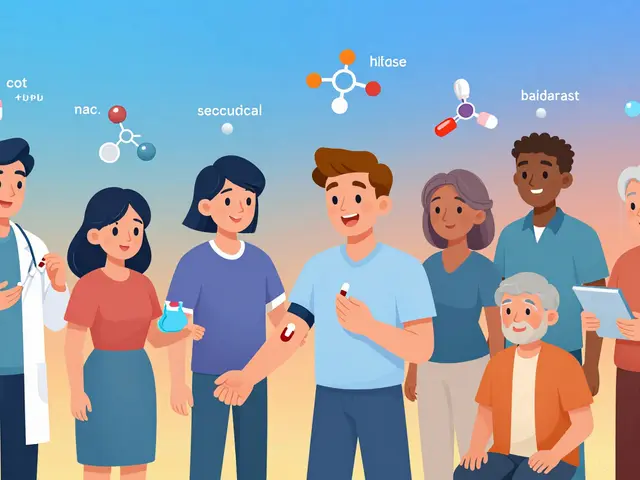MG Coping Strategies for Everyday Life
When navigating Myasthenia Gravis coping strategies, practical methods that help patients handle muscle weakness and fatigue. Also known as MG management techniques, these strategies blend medical, physical, and emotional tools to keep life moving forward.
One core element is fatigue management, a set of habits that reduces the impact of daily tiredness. By breaking tasks into smaller steps, scheduling rest periods, and using gentle stretches, patients can conserve energy for what truly matters. Another pillar, medication adherence, taking prescribed drugs exactly as directed, ensures the immune system stays in check and muscle strength remains stable.
Key Areas of Coping
Beyond fatigue and meds, MG coping strategies involve lifestyle adjustments that support overall wellness. Nutrition plays a subtle but steady role; foods rich in antioxidants and adequate protein can aid muscle repair. Regular, low‑impact exercise—like walking, swimming, or yoga—keeps joints flexible without overtaxing weakened muscles. Sleep hygiene, another often‑overlooked factor, is critical because restorative rest helps the body reset hormonal balances that can affect weakness.
Emotional health is just as vital. Joining support groups, communities where patients share experiences and advice provides a safety net for coping with uncertainty. Peer stories often reveal simple tricks—like using adaptive kitchen tools or planning medication reminders—that can make a huge difference. Professional counseling can also address anxiety or depression that sometimes follows a chronic diagnosis.
Technology adds another layer of convenience. Smartphone apps for pill tracking, symptom logs, and appointment reminders help keep the treatment plan on track. Wearable devices that monitor activity levels can alert users when they’re pushing beyond safe limits, prompting a break before fatigue spikes. Telehealth visits make it easier to consult specialists without the strain of travel.
Work and school environments may need tweaks, too. Open communication with employers or teachers about MG can lead to flexible schedules, ergonomic desk setups, or the option to work from home on tougher days. Understanding legal protections—such as the ADA in the U.S.—empowers patients to request reasonable accommodations without stigma.
Family and friends become part of the coping network when they learn about the disease’s nuances. Simple gestures—like helping with heavy chores, offering to drive to appointments, or just listening—can lift the emotional burden. Educating loved ones about the signs of a myasthenic crisis ensures quick action if symptoms worsen suddenly.
All these pieces—fatigue control, strict med routines, smart lifestyle tweaks, emotional support, tech aids, and social understanding—fit together like a puzzle. Together they create a robust framework that lets people with Myasthenia Gravis live more independently and confidently. Below you’ll find a curated collection of articles that dive deeper into each of these topics, offering step‑by‑step tips, real‑world examples, and the latest research to help you fine‑tune your own coping plan.
Learn how to manage Myasthenia Gravis at work with legal rights, practical accommodations, daily strategies, and support tips for a productive career.



